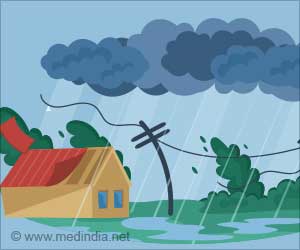A new modeling study has determined that painting your roofs white can help reduce the effects of global warming in the city.
Painting your roof white can help reduce the effects of global warming in the city, says a new study.
According to a report in Live Science, the study simulated the effects of painting roofs white to reflect incoming solar rays and found that it could help cool cities and reduce the effects of global warming."Our research demonstrates that white roofs, at least in theory, can be an effective method for reducing urban heat," said Keith Oleson, the lead author of the study and a researcher at the National Center for Atmospheric Research (NCAR) in Boulder, Colorado.
"It remains to be seen if it's actually feasible for cities to paint their roofs white, but the idea certainly warrants further investigation," he added.
Cities are particularly vulnerable to climate change because of a phenomenon known as the urban heat island effect.
The asphalt roads, tar roofs and other artificial surfaces that permeate cities absorb heat from the sun, making temperatures in urban areas on average 2 to 5 degrees Fahrenheit (1 to 3 degrees Celsius) higher than in rural areas.
"It's critical to understand how climate change will affect vulnerable urban areas, which are home to most of the world's population," said NCAR scientist Gordon Bonan, a co-author of the study.
Advertisement
Oleson and his team used a newly developed computer model to simulate the amount of solar radiation absorbed or reflected by urban surfaces.
Such a reduction would cool the world's cities by an average of about 0.7 degrees F (0.4 degrees C), with the cooling influence more noticeable during the day, especially in the summer.
White roofs could also cool temperatures inside buildings, which could change the amount of energy used for space heating and air conditioning. his in turn could affect the consumption of fossil fuels, which generate many of the greenhouse gases responsible for Earth's warming.
Source-ANI
RAS








